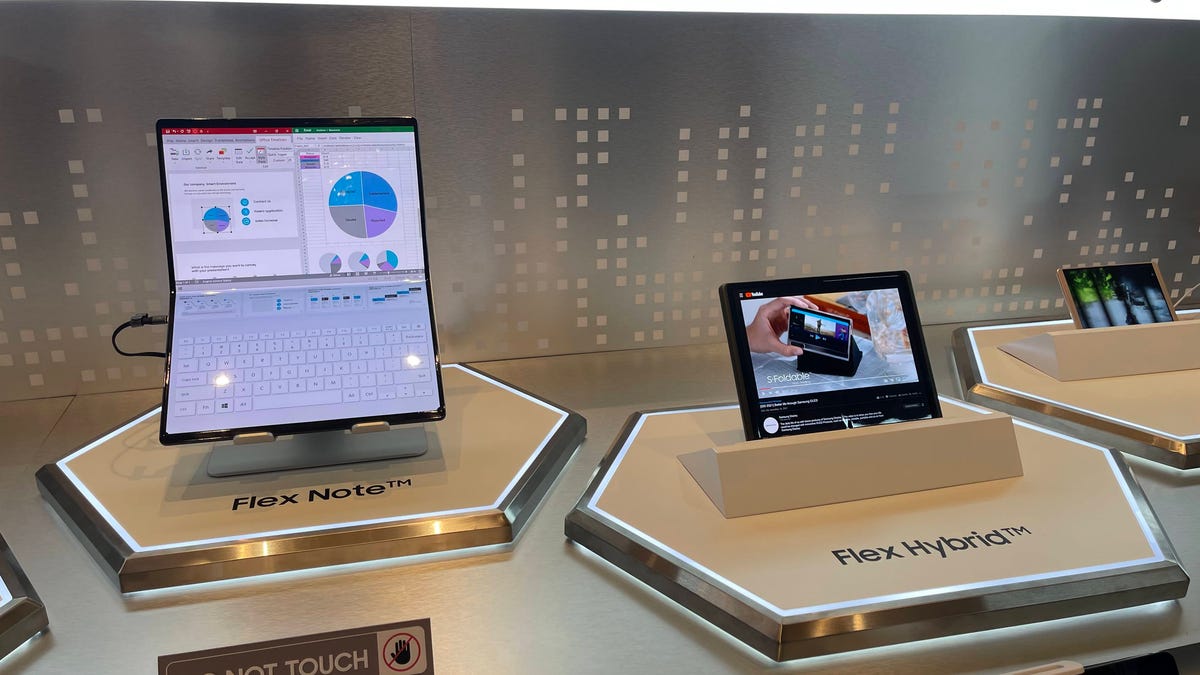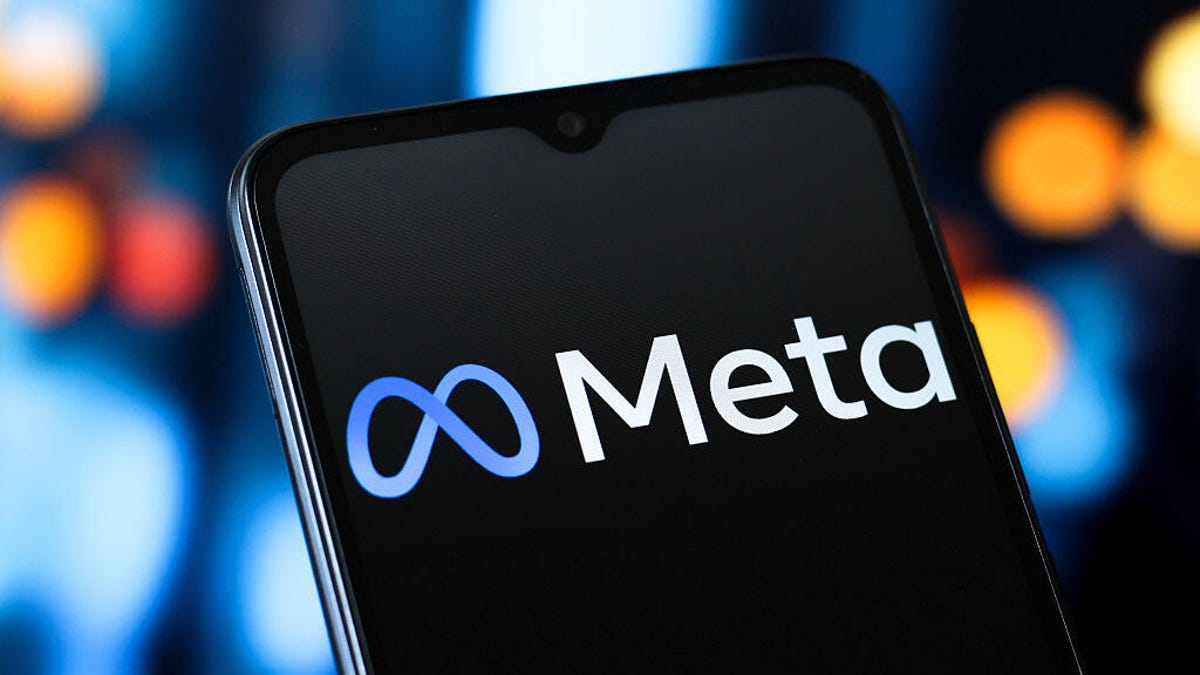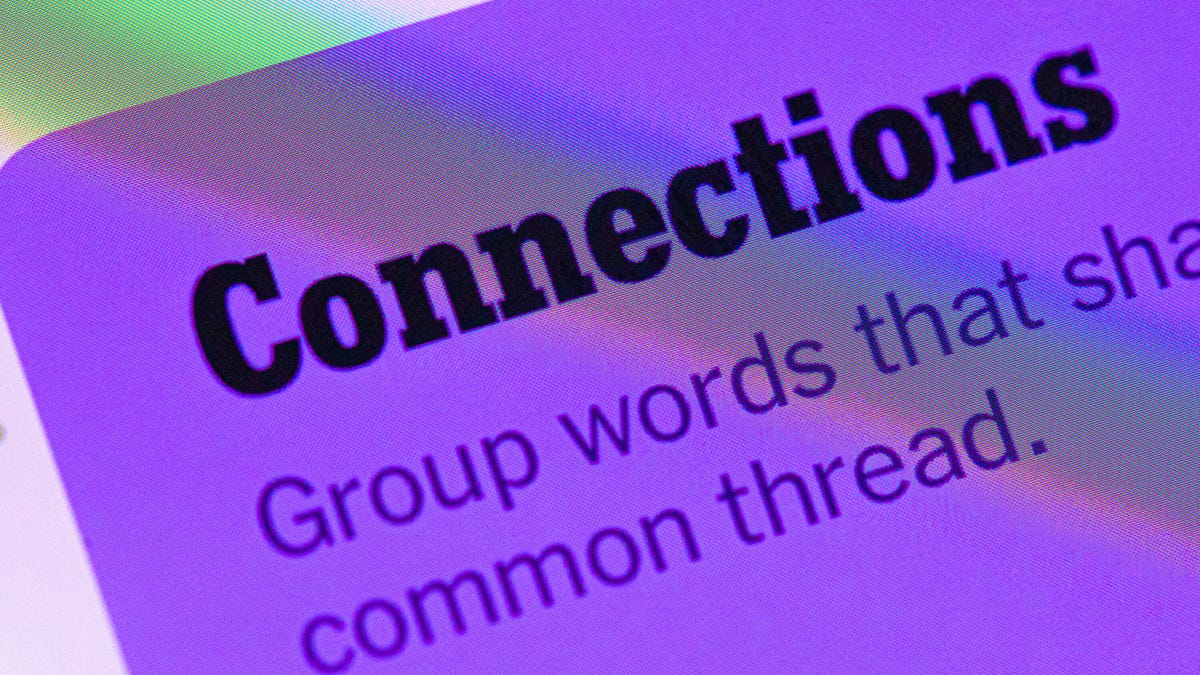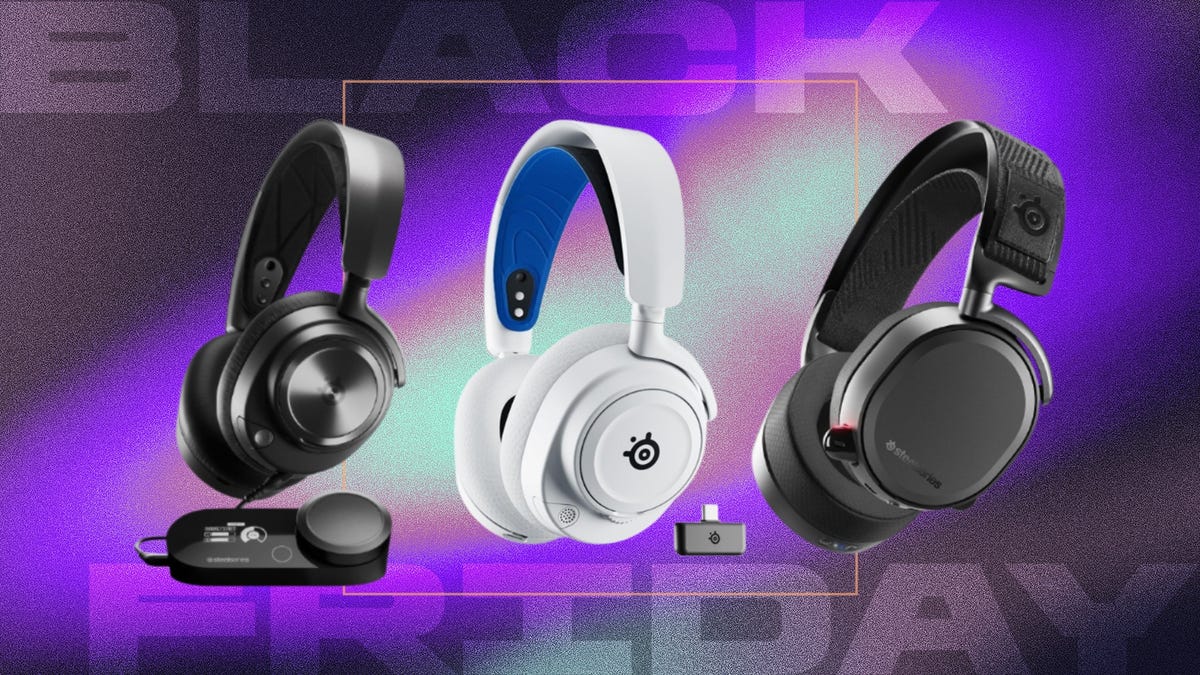Technologies
Foldable Tablets Are More Than Just a Gimmick Thanks to Samsung and LG
Commentary: At CES 2023, we saw promising concept tablets that bend and slide without breaking.

Foldable phones are all the rage, with Samsung, Oppo and Motorola, releasing their own devices. Other companies, like Apple and Google, are rumored to be working on versions of their flagship products with foldable designs.
But at CES 2023, foldable tablets are what piqued my curiosity. Samsung and LG, two of the world’s largest display-makers, both showcased tablet-like devices in various shapes and sizes that can bend, fold, slide or do all three.
These concepts got me wondering about whether there’s a real future for foldable tablets, especially at a time when companies are struggling to sell traditional tablets. What is clear, however, is that companies like Samsung and LG are thinking about it, as are PC-makers like Lenovo and Acer.
The more I’ve thought about it, the more a foldable tablet starts to make sense — maybe even more so than a foldable phone.
Samsung and LG’s foldable concepts at CES 2023
Samsung and LG both kicked off CES 2023 with announcements about their concept foldable displays, many of which come in tablet-sized formats. The star of the show was Samsung’s Flex Hybrid, a concept that you have to see to fully understand.
It closes like a notebook and opens up to reveal a tablet-like screen. But the real wow factor is that you can extend the screen’s size and even change its aspect ratio when unfolded. The right side of the screen slides out, extending the display size from 10.5 inches to 12.4 inches. In a demonstration at its CES booth, Samsung showed how the display automatically adjusts to show more content when the screen is extended.
This isn’t the first time Samsung has exhibited concepts like this. In 2022, Samsung flaunted accordion-like displays and sliding screens, designs that are also present this year.
Samsung has other ideas for shapeshifting tablets, too. It also showed the Flex Slidable Duet concept at CES, a screen that expands on both sides to provide more viewing area for playing games or watching movies. The display measures 13 to 14 inches but can extend up to 17.3 inches, according to a Samsung press release. There’s also a version of this concept that can only expand its screen in one direction, a device that Samsung appropriately calls the Flex Slidable Solo.
LG had two main foldable tablet concepts to show at CES: an 8-inch tablet that can fold inward and outward in both directions, and a 17-inch device that folds in half. LG asserts that the 17-inch display is almost entirely creaseless, and the company is positioning it as either a giant tablet or a more portable external monitor for a laptop.
The gadgets shown at CES are far from being the first foldable tablets. There are Lenovo’s X1 Fold and newer ThinkPad X1 Fold, while Asus has the Zenbook Fold OLED. LG’s 17-inch concept largely looks like it’s trying to accomplish the same goal that Lenovo and Asus have already begun to explore with these devices.
The big question is whether these companies can convince consumers that foldable tablets are even useful in the first place. Samsung is seemingly trying to address this conundrum by developing screens that can change their shape and size to go along with how you’re using your device. Based on Samsung’s demo of the Flex Hybrid, it looks like you’ll be able to view content that wasn’t visible before when expanding the slideable portion of the screen. The clip above seems to show a shopping website as an example, with more products being shown as the screen expands.
Lenovo already has some interesting ideas about how to put the X1 Fold’s bendable screen to good use. When the screen is folded halfway, you can place Lenovo’s Bluetooth keyboard over the bottom half of the screen so that it functions as a mini laptop.
Samsung also isn’t the only company experimenting with displays that can expand by sliding and rolling. TCL and Motorola have both dreamed up similar concepts for smartphone designs, although Samsung’s feels closer to an actual product given its experience in foldables. Samsung is also the world’s largest smartphone-maker and second-largest tablet-maker, which makes its concepts seem more impactful than those from TCL and Motorola. While LG no longer has a presence in the mobile industry, it’s a major display supplier and still makes its own laptops.
Foldable tablets may have advantages over foldable phones
Having a phone that can fold in half to easily fit in your pocket can certainly be useful. But a tablet that can do the same thing is even better, mostly for the simple reason that tablets are inherently larger than most phones.
There’s another advantage: Foldable tablets may not face all of the same design challenges that bendable phones have encountered so far. For example, one of my biggest complaints about the Galaxy Z Fold lineup has been that it sometimes feels awkward to use when closed. The cover screen has vastly improved since the first Galaxy Fold arrived in 2019, but it still doesn’t come close to feeling like a standard, nonfolding phone.
The Galaxy Z Fold also feels bulky when closed since its thickness essentially equates to two phones stacked on top of one another. When I reviewed Microsoft’s Surface Duo 2 in 2021, I struggled to find a comfortable way to hold it when taking photos with the main camera since you must keep the phone unfolded to see what you’re shooting.
These drawbacks may not be as big of an issue with foldable tablets. Unlike phones, you’re probably not going to be using a tablet in one hand most of the time. An outer display on a foldable tablet, if there even is one, wouldn’t matter as much because you’re presumably going to be using the device unfolded. The foldable tablets I’ve seen so far don’t even have cover screens.
Aside from the selfie camera for video chats, camera quality also isn’t as important on a tablet as it is on a phone. So the awkwardness issue I mentioned when taking photos with the Surface Duo 2 likely wouldn’t happen on a foldable tablet.
The primary appeal behind foldable tablets from Samsung, LG, Lenovo and Acer — concept or not — is portability. Having a tablet that folds in half makes it easier to fit in a backpack, suitcase or purse on your next flight, commute or beach trip. But phones are already compact in their current form, meaning the value proposition behind phones like the Galaxy Z Fold can be a little harder to sell.
That doesn’t mean foldable tablets are immune from design hiccups, as my colleague Dan Ackerman wrote when trying out Lenovo’s and Acer’s devices. Creating larger displays that bend and fold likely presents its own set of engineering challenges compared to foldable phones.
Foldable phones are also moving more quickly, with market researcher IDC forecasting a 66.6% year-over-year increase in global shipments in 2022. So even though foldable phones may have different hurdles to overcome, companies like Samsung have been able to address these points over several generations of products so far.
Tablets need a refresh
Tablet sales got a boost during the early phase of the pandemic as people socialized, worked and attended school virtually. But sales looked bleak last year. Global tablet shipments were down 8.8% year over year in the third quarter of 2022, marking the fifth straight quarter of decline, according to IDC. That slump was mostly due to economic headwinds as consumers are looking to spend less, says the report.
New tablets with shapeshifting displays may not be enough to change that, especially since foldable devices are typically expensive. But tablets are still long overdue for a refresh. Arguably, the tablet’s biggest transformation since the first iPad’s launch has been the shift toward laptop-tablet hybrid devices, a transition that began roughly a decade ago around the debut of Windows 8. But tablets haven’t fundamentally changed much since then, aside from adapting larger screens and gaining routine hardware upgrades.
It took years for those hybrid devices to work out their kinks and become mainstays in our lives. If foldable tablets catch on, the case will likely be the same, mostly because of high prices and software challenges. But the concepts present at CES show that progress is certainly happening.
The goal for all tablets, foldable or not, is to provide a larger display for tasks that your phone may not be ideal for such as gaming, watching movies, reading and working. So finding creative ways to further extend that screen size, as Samsung has done with the Flex Hybrid’s slidable screen, seems like a natural evolution.
Foldable phones still feel like they’re in search of a purpose, but foldable tablets may have already found one.
Technologies
Meta Allegedly Profited by $16B From Scam Ads. US Senators Demand FTC, SEC Probe
The lawmakers say Meta’s platforms may be implicated in «about a third of all US scams» and linked to more than $50 billion in consumer losses last year.

US Senators Josh Hawley and Richard Blumenthal are calling for an investigation into Meta over its alleged role in profiting from scam-laden advertisements on Facebook and Instagram. The demand follows a Reuters investigation reportedly based on internal Meta documents that estimated that nearly 10% of Meta’s 2024 revenue — about $16 billion — came from alleged «illicit advertising.»
In a letter to the Federal Trade Commission and the Securities and Exchange Commission, the lawmakers urged regulators to «immediately open investigations and, if the reporting is accurate, pursue vigorous enforcement action … to force Meta to disgorge profits, pay penalties and agree to cease running such advertisements.»
One document reportedly alleged that Meta earned $3.5 billion in just six months from what it classified as «higher-risk» scam ads.
The same internal records reportedly suggested that many ads allegedly violating fraud rules were permitted to run because they «did not apply to many ads… [that staff] believed ‘violated the spirit’ of its rules against scam advertising.»
Meta denies all of these allegations.
Read also: Meta’s All In on AI Creating the Ads You See on Instagram, Facebook and WhatsApp
Don’t miss any of our unbiased tech content and lab-based reviews. Add CNET as a preferred Google source.
Why this matters for you
The scale of this alleged fraud raises serious concerns about Meta’s business model. Many question whether the company is doing enough to police its ad ecosystem, given that a major revenue stream appears to be tied to deceptive or outright fraudulent campaigns.
The senators allege that Meta’s lax enforcement — combined with the continued presence of gambling ads, payment scams, political deepfakes and other dangerous content in its public Ad Library — underscores significant risks.
In their letter, Hawley and Blumenthal highlighted that reducing reports of scam ads by 58% over 18 months — as Meta says — may not tell the whole story. They pointed to broader trends that, according to their own reading of the documents, Meta’s platforms may be allegedly implicated in «about a third of all US scams» and linked to more than $50 billion in consumer losses last year.
Read more: What Is Meta AI? Everything to Know About These AI Tools
What Meta is saying
Meta responded defensively to this call for investigation.
Meta spokesman Andy Stone criticized the senators’ allegations as «exaggerated and wrong,» insisting that the company «aggressively fights fraud and scams because people on our platforms don’t want this content, legitimate advertisers don’t want it, and we don’t want it either.»
Ongoing misinformation on Meta platforms
Among the more provocative allegations is that some of the scam ads impersonate government figures or political leaders. The senators point to specific examples, including a bogus advertisement that falsely claimed President Donald Trump was offering $1,000 to food assistance recipients.
They also raise concerns that foreign cybercrime groups based in countries such as China, Sri Lanka, Vietnam and the Philippines could be behind many of the scam campaigns.
In general, the senators’ push for FTC and SEC action seeks accountability for a social media giant whose ad system may be fueling fraud at an unprecedented scale, though Meta publicly underscores its commitment to user safety. With so much of Meta’s business potentially tied to high-risk ads, the outcome of any investigation could reshape not only its practices but also broader regulatory expectations for major tech companies going forward.
Read more: How to Opt Out of Instagram and Facebook Using Your Posts for AI
Technologies
Today’s NYT Connections Hints, Answers and Help for Nov. 25, #898
Here are some hints and the answers for the NYT Connections puzzle for Nov. 25, #898

Looking for the most recent Connections answers? Click here for today’s Connections hints, as well as our daily answers and hints for The New York Times Mini Crossword, Wordle, Connections: Sports Edition and Strands puzzles.
Today’s Connections: Sports Edition is both fun and tricky. Think colors, and see if you can find items that share the same color. The purple category wants you to look within four words and find a connecting word hidden in them. If you’re struggling with today’s puzzle but still want to solve it, read on for hints and the answers.
The Times now has a Connections Bot, like the one for Wordle. Go there after you play to receive a numeric score and to have the program analyze your answers. Players who are registered with the Times Games section can now nerd out by following their progress, including the number of puzzles completed, win rate, number of times they nabbed a perfect score and their win streak.
Read more: Hints, Tips and Strategies to Help You Win at NYT Connections Every Time
Hints for today’s Connections groups
Here are four hints for the groupings in today’s Connections puzzle, ranked from the easiest yellow group to the tough (and sometimes bizarre) purple group.
Yellow group hint: Not big.
Green group hint: These things are the same color.
Blue group hint: Itchy!
Purple group hint: They all share words that are positive.
Answers for today’s Connections groups
Yellow group: Small-time.
Green group: Things that are pink.
Blue group: Things you can scratch.
Purple group: Starting with optimistic words.
Read more: Wordle Cheat Sheet: Here Are the Most Popular Letters Used in English Words
What are today’s Connections answers?
The yellow words in today’s Connections
The theme is small-time. The four answers are Mickey Mouse, rinky-dink, trivial and two-bit.
The green words in today’s Connections
The theme is things that are pink. The four answers are Barbie Dreamhouse, calamine lotion, cherry blossom and flamingo.
The blue words in today’s Connections
The theme is things you can scratch. The four answers are bug bite, lottery ticket, vinyl record and your head.
The purple words in today’s Connections
The theme is starting with optimistic words. The four answers are glad-hand, Happy Meal, merry-go-round and sunny-side up.
Technologies
I’m Buying These Headphones for My Gamer Thanks to This Deep Black Friday Discount
SteelSeries headphones are among the top gaming headsets on the market and right now you can score them for as much as half off ahead of Black Friday.

Ready or not, Black Friday is just about here. And Black Friday deals are already popping up on the regular.Here at CNET, we offer our services as dedicated deal finders, scouring the market to curate the best offers for you. We recently spotted some of our favorite gaming headsets on sale at Amazon, some of them for more than half off. We don’t know if these prices will last all the way to Black Friday itself, so if you see something you like, we suggest grabbing it sooner rather than later.
Right now, several SteelSeries’ most popular gaming headsets are seeing nice discounts. I’ve highlighted some of the best offers below, including the ones in my own cart right now, but be sure to check out the Amazon page to see all the options.
First up, the headset in my cart right now as as a holiday gift for my discerning teenage son is the SteelSeries Arctis Nova 3x wireless gaming headset, currently down to just $90, a $20 savings. Arctis Nova 3x comes in blue, black or white and is compatible with Xbox, PC, PS5, Switch and mobile and has a whopping 40-hour battery life. They are lightweight and have a stretchy headband for added comfort.
If you want to go pro, check out the SteelSeries Arctis Nova Pro wireless headset, down to $290 from $380. That’s nearly $100 off a multi-platform compatible headset good for Xbox, Switch, PS5, PS4, PC and mobile. This headset was our sibling site, PCMag’s top pick for best overall gaming headphones. It boasts active noise cancellation, 360-degree spatial audio and a ClearCast Gen 2 mic. Only the black variant is currently on sale at this big of a discount.
Essentially a more affordable version of the above, the Arctis Nova Pro wired headset for Xbox is down to $150, which is $100 off the regular price of $250. This one also got PCMag’s seal of approval for best wired gaming headphones.
Buyers should note that a few of the headsets on sale are renewed, so be sure to double check before buying. We’ve also rounded up the best Black Friday headphone deals if you’re in the market for something for an audiophile near you.
CHEAP GAMING LAPTOP DEALS OF THE WEEK
-
$900 (save $300)
Why this deal matters
Gaming headphones come in a wide range of styles and price points, but the best ones factor in three key components: sound quality, battery life and comfort — those all-night gaming sessions pretty much demand it. Over the years, we’ve tested a ton of brands, and SteelSeries frequently comes out on top, especially for PC and Xbox users. Being able to pick up a pair at a discount makes it a great opportunity to gift or grab a new headset that delivers on comfort, sound and quality.
Join Our Daily Deals Text Group!
Get hand-picked deals from CNET shopping experts straight to your phone.
By signing up, you confirm you are 16+ and agree to receive recurring marketing messages at the phone number provided. Consent is not a condition of purchase. Reply STOP to unsubscribe. Msg & data rates may apply. View our Privacy Policy and Terms of Use.
-

 Technologies3 года ago
Technologies3 года agoTech Companies Need to Be Held Accountable for Security, Experts Say
-

 Technologies3 года ago
Technologies3 года agoBest Handheld Game Console in 2023
-

 Technologies3 года ago
Technologies3 года agoTighten Up Your VR Game With the Best Head Straps for Quest 2
-

 Technologies4 года ago
Technologies4 года agoBlack Friday 2021: The best deals on TVs, headphones, kitchenware, and more
-

 Technologies4 года ago
Technologies4 года agoVerum, Wickr and Threema: next generation secured messengers
-

 Technologies4 года ago
Technologies4 года agoGoogle to require vaccinations as Silicon Valley rethinks return-to-office policies
-

 Technologies4 года ago
Technologies4 года agoOlivia Harlan Dekker for Verum Messenger
-

 Technologies4 года ago
Technologies4 года agoiPhone 13 event: How to watch Apple’s big announcement tomorrow
